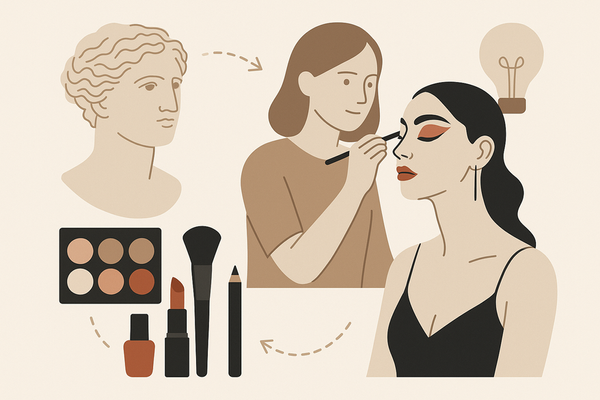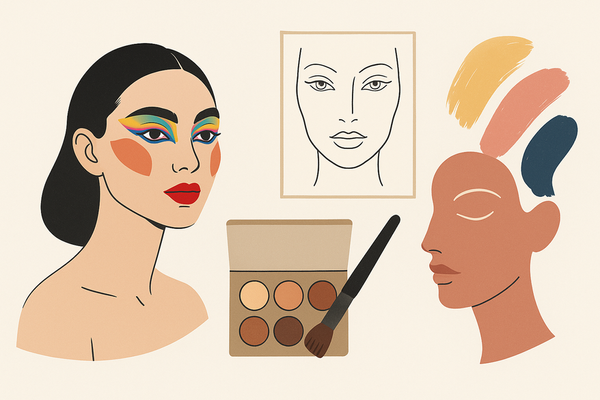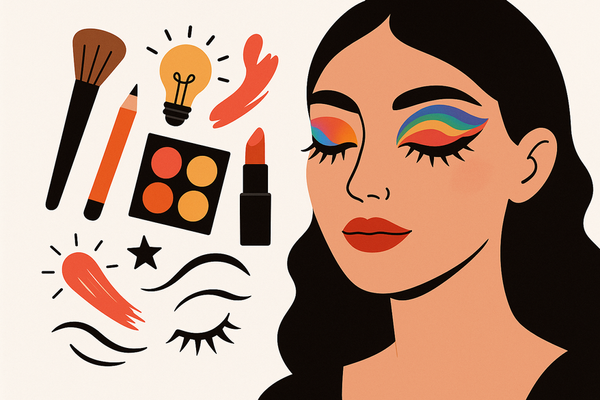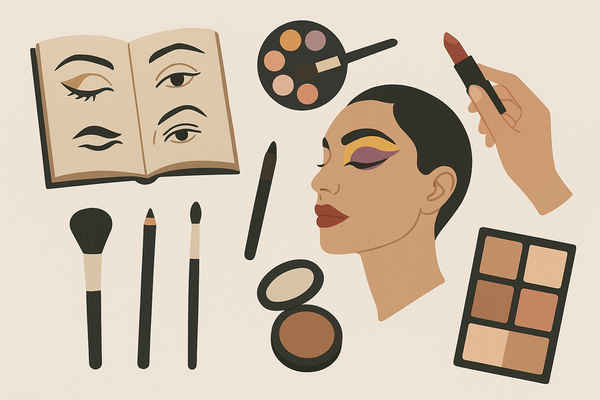Mastering Creative Makeup Designs: Your Ultimate Guide to Artistic Beauty
Explore the transformative art of creative makeup designs with history, techniques, and expert tips to transform faces into living canvases.
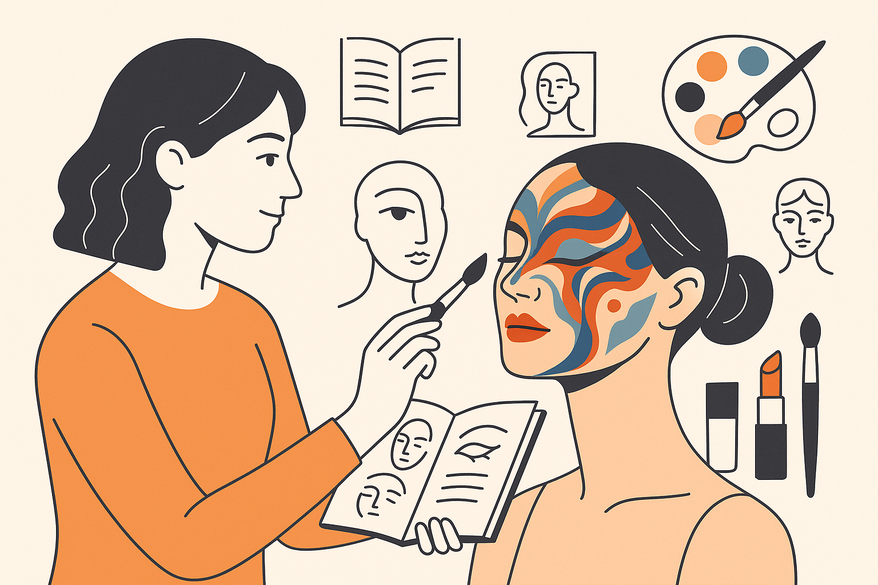
Estimated reading time: 8 minutes
Key Takeaways
- Creative makeup designs transform the face into a living canvas through bold colors, textures, and storytelling.
- Historical roots in theatre and runway pioneers like Pat McGrath and Isamaya Ffrench inform modern artistry.
- Core techniques include color blending, graphic lining, texture layering, and the use of prosthetics.
- A clear, step-by-step tutorial ensures success from skin prep to final setting.
- Stay inspired by festival UV looks, avant-garde editorial styles, and AI-driven preview tools.
Table of Contents
- Introduction to Creative Makeup Designs
- What Are Creative Makeup Designs?
- History and Evolution of Creative Makeup Designs
- Techniques and Tools for Creative Makeup Designs
- Step-by-Step Process / Tutorial
- Inspiration and Trend Analysis
- Expert Insights and Resources
- Conclusion on Creative Makeup Designs
- FAQ
Introduction to Creative Makeup Designs
Creative makeup designs are revolutionising the beauty world by turning faces into living art. This shift reflects a cultural move toward self-expression and individuality, where bold color, texture, and conceptual storytelling replace conventional enhancement. From avant-garde looks on social media to abstract face art on runways, this guide will explore the history, key techniques, step-by-step tutorials, current trends, and expert insights you need to master your own unique style.
What Are Creative Makeup Designs?
Creative makeup designs go beyond traditional beauty applications by treating the face and body as an artistic canvas. They typically employ:
- Bold color palettes—bright neons, jewel tones, pastels, metallics
- Unique textures—glitters, foils, crystals, sequins, 3D materials
- Abstract patterns—geometric shapes, floating cut-creases, brushstroke motifs
- Unconventional materials—feathers, petals, miniature prosthetics
Unlike classic makeup’s focus on subtlety and symmetry, creative designs emphasize inventive color use, conceptual narratives, and fine-art principles. Each look can evoke emotion or tell a story, much like a painting.
History and Evolution of Creative Makeup Designs
Origins in Theatre and Stage
- Performers used heavy pigments and exaggerated lines to project characters to distant audiences.
- Color symbolism and bold features were essential storytelling tools.
Shift to High-Fashion and Runway
- Editorial magazines and photography elevated makeup to wearable art.
- Runways embraced sculptural, avant-garde designs to complement fashion statements.
For deeper context, see Design Encyclopedia.
Pioneering Artists
- Pat McGrath—high-gloss textures, metallics, 3D effects.
- Isamaya Ffrench—body-sculpting pigments, experimental materials.
- James Molloy—sculptural color placement, architectural liners.
Techniques and Tools for Creative Makeup Designs
Techniques
- Color Blending—seamless gradients, painterly brushstrokes, matte-to-metallic contrasts.
- Graphic Lining—geometric shapes, floating cut-creases, negative space accents.
- Texture Layering—glitters, metallic flakes, crystals, sequins for multi-dimensional effects.
- Face and Body Painting—alcohol-activated palettes for durability; water-based paints for festivals and cosplay.
- Prosthetics & Materials—feathers, flowers, lightweight clay prosthetics secured with medical-grade adhesive.
Explore further in the creative makeup designs guide.
Tools & Products
- High-pigment eyeshadows and liners (gel, liquid, pencil)
- Brushes—synthetic for creams, natural-hair for detail work
- Body paints and alcohol-activated palettes for full coverage
- Prosthetic adhesives and skin-safe materials
- Setting sprays for long-lasting wear under lights or camera
- AI-driven preview tools—try virtual looks with Makeup Check AI and its virtual makeup try-on
Step-by-Step Process / Tutorial for Creative Makeup Designs
- Prepare the Skin—cleanse, moisturise, prime for smooth adhesion.
- Outline the Design—sketch key shapes with nude eyeliner or a face chart reference.
- Apply Color—use bold shadows or face paints; blend with brushes or sponges.
- Add Graphic Elements—define shapes using liquid liner or gel; carve out negative space.
- Play with Texture—press glitter, foils, or gems onto tacky areas with skin-safe adhesive.
- Detail and Set—sharpen lines with a fine brush; lock in the design with setting spray.
Inspiration and Trend Analysis for Creative Makeup Designs
Explore standout styles and rising movements to keep your looks fresh:
- Fantasy & Avant-Garde—unicorn and dragon palettes, abstract modern-art strokes, bold asymmetry.
- Festival Looks—UV-reactive pigments, face gems, metallic temporary tattoos.
- Editorial and Runway—color-blocked eyes extending to temples, exaggerated graphic liners.
Emerging trends include high-shine wet-look accents, AI-driven design previews, and eco-friendly, vegan pigments.
Expert Insights and Resources on Creative Makeup Designs
“Makeup is a movement. An act of performance, not just enhancement.”
— Pat McGrath
“I emphasize raw beauty by blending classic techniques with unconventional materials—feathers, clay, 3D pigments.”
— Isamaya Ffrench
For more on blending art with AI, see Creative Makeup Designs & AI.
Conclusion on Creative Makeup Designs
By defining creative makeup designs, tracing their theatrical origins, and exploring essential techniques, tools, and tutorials, you now have a clear path from experimentation to mastery. We examined runway-inspired graphics, festival UV FX, and technological innovations—plus insights from industry visionaries. Creative makeup designs offer limitless self-expression: your face is the ultimate canvas. Embrace bold experimentation, share your work on social media with #creative-makeup-designs, and join a global community of imaginative beauty artists.
FAQ
- What tools do I need as a beginner?
- Start with a basic primer, high-pigment eyeshadow palette, synthetic blending brushes, and a long-wear setting spray.
- How long does a creative makeup session typically take?
- Expect 45–90 minutes for detailed designs; simpler looks can be done in 20–30 minutes.
- Can I use everyday makeup products for creative designs?
- Yes—many artists repurpose existing palettes and liners. For 3D effects, add cosmetic-grade glitters or sequins.
- How do I safely remove 3D embellishments?
- Use an oil-based cleanser or adhesive remover, gently working the product under embellishments before washing.

